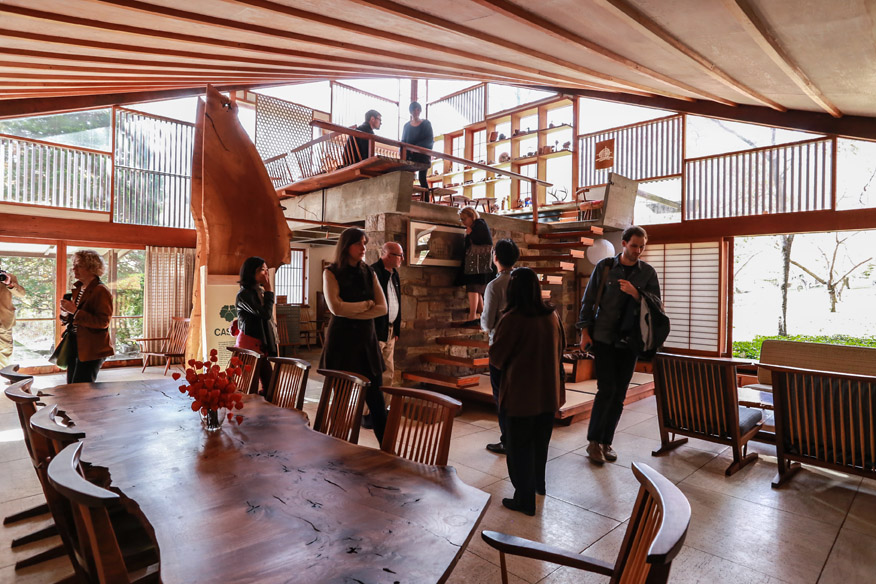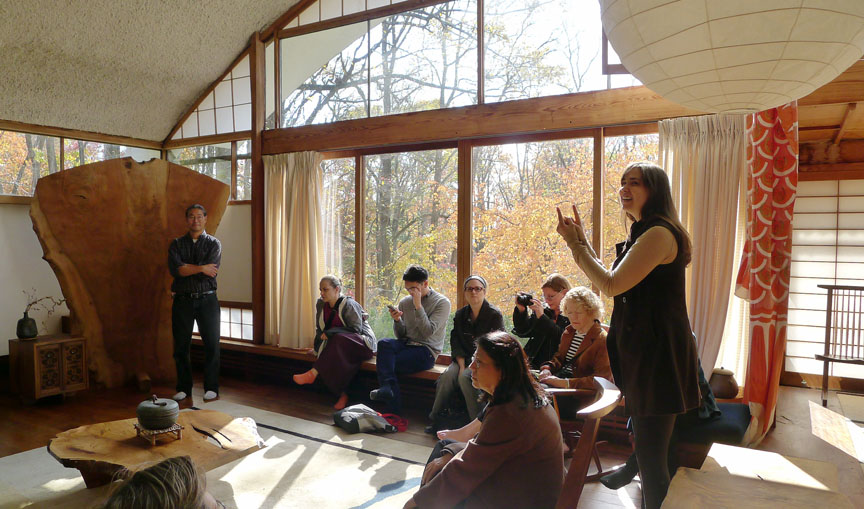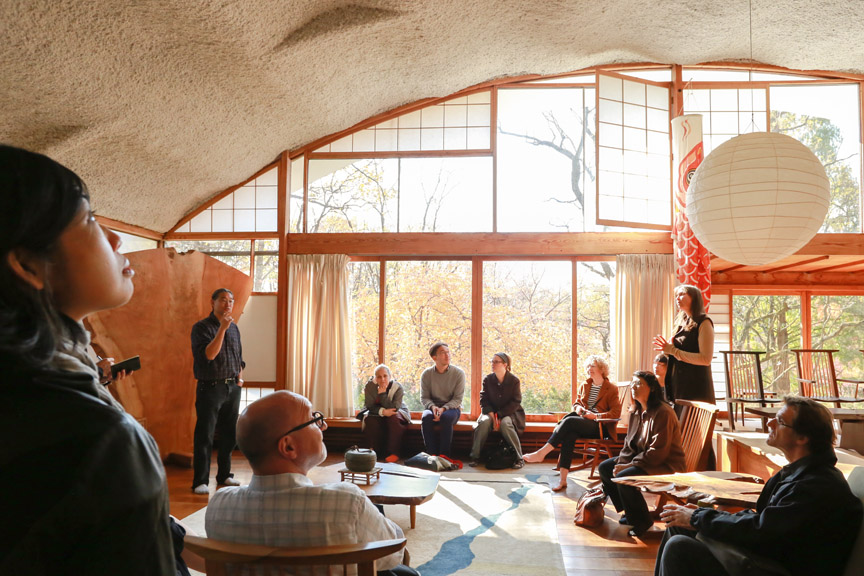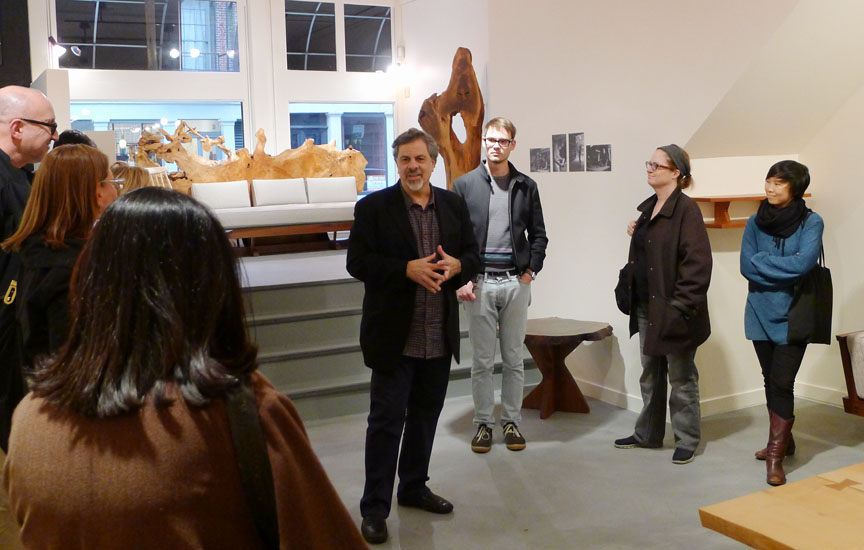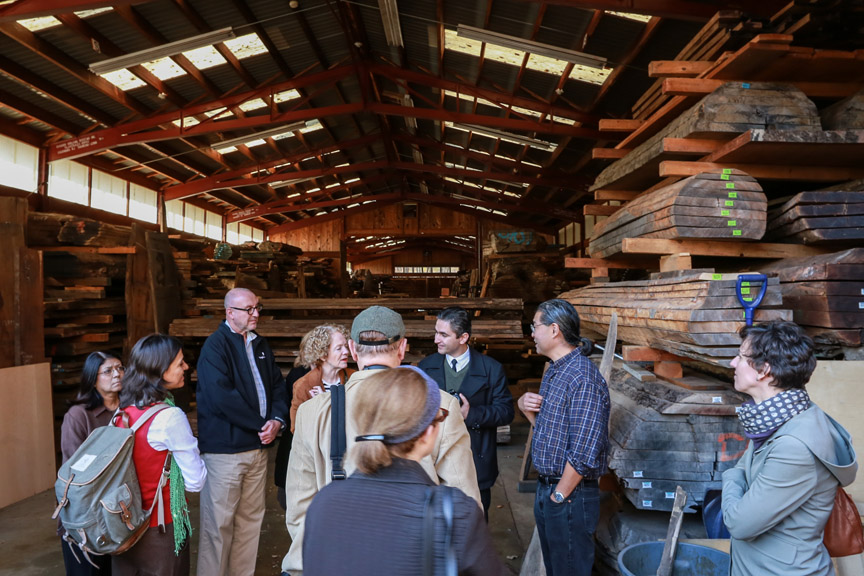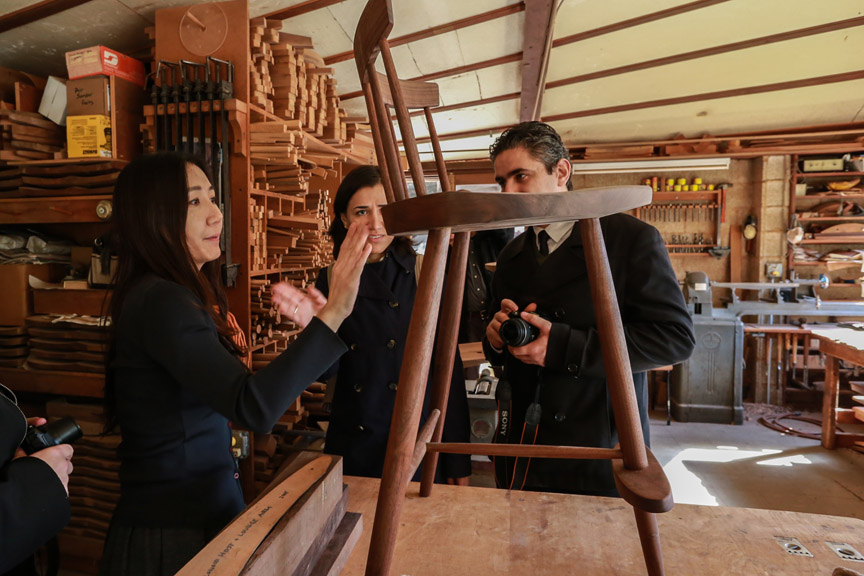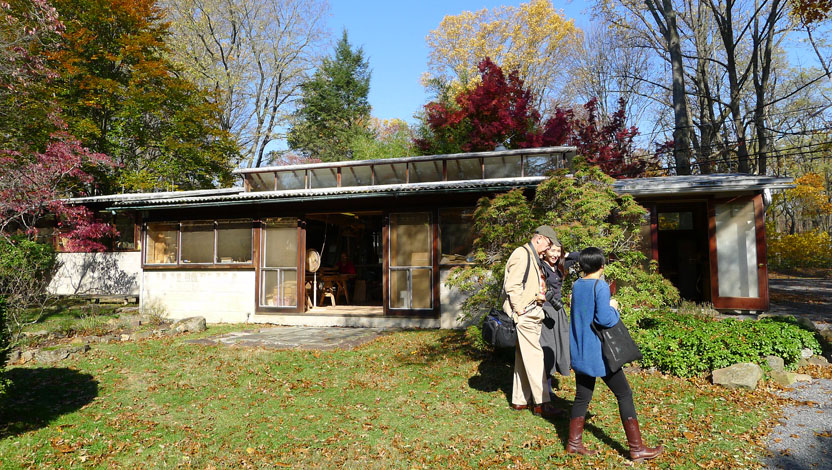by: James Way
Queuing up at Pershing Square amidst the swarm of neon-clad NY Road Runners Dash to the Finish Line runners, a conspicuously darkly-attired group waited in the crisp morning air for a bus to take them along narrow rural roads to the New Hope, PA-based George Nakashima Woodworker property. A variety of 14 workshops, storehouses, studios, and structures combine the seeming paradoxes of Eastern and Western aesthetics, traditional and contemporary craftsmanship, and historic and modern sensibilities into a unique identity also visible in George Nakashima’s furniture.
Nakashima, a Spokane, WA, native and MIT architecture graduate, travelled extensively and worked for architect Antonin Raymond in Japan during the 1930s. Later in the U.S., Nakashima visited Raymond in New Hope (after he initiated Nakashima’s release from a WWII internment camp), and subsequently bartered with a farmer for the land that became today’s workshop grounds – 12 acres around a lightly wooded south-facing hill.
Our guides, Ru Amagasu, Nakashima ‘s grandson, and Miriam Carpenter, designer and assistant to Nakashima’s daughter Mira (who now leads the enterprise), led us around the carefully arranged property while discussing Nakashima’s history and philosophy. Summarizing the his approach to material, they brought us to the Pole Barn where planks air dry, typically for a year per inch of thickness, and age, sometimes for decades, until that special piece demands it. In the Reception House, Agamasu pointed out how the buildings are integrateed into the landscape, and light, just as furniture, should match its owners and setting – a carefully balanced relationship.
Later in Philadelphia, Robert Aibel, director of the Moderne Gallery, discussed his exhibition “George Nakashima Woodworkers: An Evolving Legacy.” Showcasing vintage pieces and new pieces designed by Mira and Carpenter and built by the 10 Nakashima craftspeople, the exhibition hinted at the future of the woodworkers’ collaborative nature and where the Nakashima brand could lead. Having mounted numerous Nakashima exhibitions, Aibel exuded anecdotes about the pieces while pointing out details and material sensibilities that knock-offs cannot match.
Emphasizing the past and present of George Nakashima Woodworker, the tour showed that regardless of where the Nakashima legacy heads next, it is firmly rooted in its own unique identity.
James Way, Assoc. AIA, Marketing Manager at Dattner Architects, has written for The Architect’s Newspaper and Tokyo Art Beat.
Event: Nakashima Tour
Location: New Hope, PA – Philadelphia, PA, 11.02.13
Speakers: Ru Agamasu and Miriam Carpenter, George Nakashima Woodworker; and Robert Aibel, Moderne Gallery
Organizers: AIANY Interiors Committee








